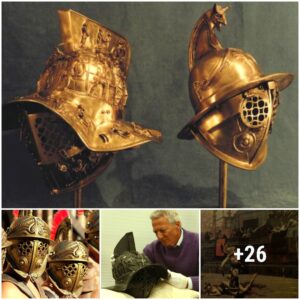
‘It seems that I have appendicitis,’ wrote Dr Leonid Rogozov in his diary on April 29, 1961.
It was a fairly matter-of-fact description from the 27-year-old Russian surgeon, but what he did a few days later was anything but ordinary: he cut out his own appendix.
Dr Rogozov had the misfortune to come down with appendicitis in one of the most remote corners of the Earth, as he was part of a Soviet expedition to Antarctica, sent there to set up a new station, Novolazarevskaya, at Queen Maud Land.
The journey there, by sea, had taken 36 days, so there was no possibility of travelling to a hospital elsewhere.
Two months after the base was established, Dr Rogozov, the only doctor on the expedition, became weak and nauseous and felt a pain in the lower right side of his abdomen. His first instinct was to hide his condition from his colleagues.
‘I am keeping quiet about it,’ he wrote. ‘Even smiling. Why frighten my friends? Who could be of help? A polar explorer’s only encounter with medicine is likely to have been in a dentist’s chair.’
But as the hours passed and he feared his appendix would burst at any moment, Dr Rogozov made a decision that would change – and save – his life.
In a diary entry on April 30, he wrote: ‘I did not sleep at all last night. It hurts like the devil! A snowstorm whipping through my soul, wailing like a hundred jackals. Still no obvious symptoms that perforation is imminent, but an oppressive feeling of foreboding hangs over me… This is it… I have to think through the only possible way out: to operate on myself… It’s almost impossible… but I can’t just fold my arms and give up.’
He had performed the procedure many times on his patients, but could he do it on himself?
FAMOUS SELF-SURGERIES
– Evan O’Neill Kane, a surgeon in Pennsylvania in the late 19th and early 20th centuries, removed his own appendix in 1921 and repaired his own hernia in 1932
– Inés Ramirez from Mexico performed her own Caesarean section in March 2000 without any medical knowledge. Both she and her baby survived
– Dr Jerry Nielsen performed a biopsy on a lump on her breast while on duty at a research station in the South Pole. Her cancer went into remission, but later returned and she died in 2009
– Aron Ralston amputated his own right forearm with a pocketknife after it was pinned down by a boulder during a hike in Utah in 2003
Within a few hours, Dr Rogozov had instructed his colleagues to clear his room and sterilise everything, turning the quarters into a makeshift operating theatre. A meterologist and a mechanic were tasked with handing him instruments during the procedure and holding up a mirror so he could see what he was doing.
In the end, Dr Rogozov barely used the mirror, opting to carry out the operation by feel; he decided not to wear rubber gloves.
He wrote later: ‘I worked without gloves. It was hard to see. The mirror helps, but it also hinders—after all, it’s showing things backwards. I work mainly by touch.’

Elevating the lower half of his body slightly and putting himself into a self-reclining position, he operated on himself, carrying out an auto-appendectomy.
At 2am on May 1, the operation began. He took a local anesthetic, novocaine, to allow him to cut into the wall of his abdomen, and had made an incision between 10 to 12 cm in width after 15 minutes.
In a diary entry a week later, he wrote: ‘My poor assistants! At the last minute I looked over at them: they stood there in their surgical whites, whiter than white themselves.
‘I was scared too. But when I picked up the needle with the novocaine and gave myself the first injection, somehow I automatically switched into operating mode, and from that point on I didn’t notice anything else.’
When Rogozov was manipulating his own innards as he removed the appendix, his intestine gurgled, which was highly unpleasant for us
He did, understandably, make one mistake, accidentally damaging the cecum – or the beginning of the large intestine – which he had to sew up. When he did expose the appendix, he found that he had made the right decision to operate.
Recalling the moment a week later, he wrote: ‘Finally, here it is, the cursed appendage! With horror I notice the dark stain at its base. That means just a day longer and it would have burst.
‘At the worst moment of removing the appendix I flagged: my heart seized up and noticeably slowed; my hands felt like rubber. Well, I thought, it’s going to end badly. And all that was left was removing the appendix. And then I realised that, basically, I was already saved.’
After removing the appendix, he applied antibiotics and closed the wound.
APPENDICITIS FACTS
– The first successful appendectomy was performed by surgeon Claudius Amyand at St George’s Hospital in London in 1735
– Appendicitis is the swelling of the appendix which causes pain in the abdomen
– It is estimated that 1 in 13 people will develop appendicitis in their lifetime
– Appendicitis is most common between the ages of 10 and 20
– The appendix is a small pouch about 5 to 10cm long
– It is not known what purpose the appendix serves and removing it is not harmful
Source: NHS
The procedure lasted about two hours, with Dr Rogozov taking short 25-second breaks every five minutes as he became gradually weaker.
Station director Vladislav Gerbovich, who watched the operation, wrote later: ‘When Rogozov had made the incision and was manipulating his own innards as he removed the appendix, his intestine gurgled, which was highly unpleasant for us; it made one want to turn away, flee, not look—but I kept my head and stayed.’
The surgeon showed his helpers how to wash and put away the instruments and after that was done, he took some sleeping tablets. The next day, he reported feeling better and within two weeks he had returned to his normal duties.
It was more than a year before Dr Rogozov was able to return with the team to Russia, and he was back working in his clinic the next day. He came back a national hero, and was given the Order of the Red Banner of Labour, an accolade for bravery.
But Dr Rogozov shunned the limelight, reportedly saying it was ‘a job like any other, a life like any other’.
After a career in several hospitals in Saint Petersburg, he died in 2000 at the age of 66 from lung cancer.
His son, Dr Vladislav Rogozov, an anesthetist, told BBC World this week: ‘He was confronted with a very difficult situation of life and death. He could wait for no help, or make an attempt to operate on himself.’





